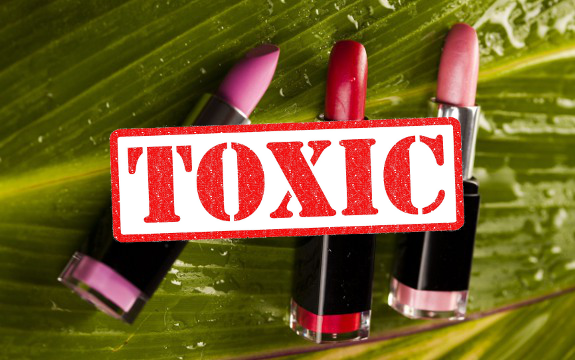Lipsticks and Other Cosmetics Carry Toxic Risks for Women and Unborn Babies

 Just as with food labels, cosmetic labels can be misleading and dangerous. But unlike foods, cosmetic companies are given more free rein and allowed to use whatever they want without warnings or much testing at all. As a result, millions of women around the world slather their faces daily with potentially dangerous toxins.
Just as with food labels, cosmetic labels can be misleading and dangerous. But unlike foods, cosmetic companies are given more free rein and allowed to use whatever they want without warnings or much testing at all. As a result, millions of women around the world slather their faces daily with potentially dangerous toxins.
One recent investigation on the dangers of cosmetics was carried out in Manila, where Aileen Lucero, the acting national coordinator of the EcoWaste Coalition, decided to look more closely into the cosmetic-ingredients being used by women there. What she found was that nearly all tested brands contained traces of heavy metals, and some even exceeded “safe”
Mercury, lead, and arsenic were just a few of the toxic ingredients. These along with barium, chromium, and cadmium—also found—could be wreaking havoc on the health of women and even the health of their unborn children.
Here in the US, we can find similar investigations uncovering similarly-troubling truths at the Environmental Working Group.
The Environmental Working Group’s SkinDeep database was amassed to include some 72,000 cosmetic products and the results of chemical analyses. Consumers can search for their favorite products or look for those that rank the best.
As an example, a quick search for the popular foundation Almay Clear Complexion reveals the make-up received an overall score of 6, which puts it in the “moderate hazard” category. The database admits their information on this particular make-up is limited, not surprising when cosmetic companies have a vested interest in keeping the dangers a secret.
You can scan through the ingredients of the foundation as each one of the ingredients is also given a score. Propylparaben, for instance, is given a 10 or a high hazard because of its effects on the endocrine and reproductive systems.
Because the cosmetics industry doesn’t want their consumers straying, they make information like that provided in the SkinDeep database difficult to find. These companies aren’t required to list their toxic ingredients, and cosmetics are not required to get FDA clearance before hitting the market.
In other words, it’s a free for all, a race to make money before the true extent of the damage is known.
The cosmetics industry is massive, further spurred on by a twisted idyllic sense of beauty perpetuated by the fashion industry. To that end, women are often putting themselves at risk of disease or infertility simply to look “better” or to fit into some standard of beauty that is likely seriously flawed to begin with.
The solution: show companies what we want by purchasing from transparent and respectable cosmetic-makers. You’ll also find that you can often avoid the industry altogether by learning simple and safe DIY beauty treatments.
You can find many articles on natural beauty here at NaturalSociety – here is just one outlining 10 ways to use lemons for beauty.
